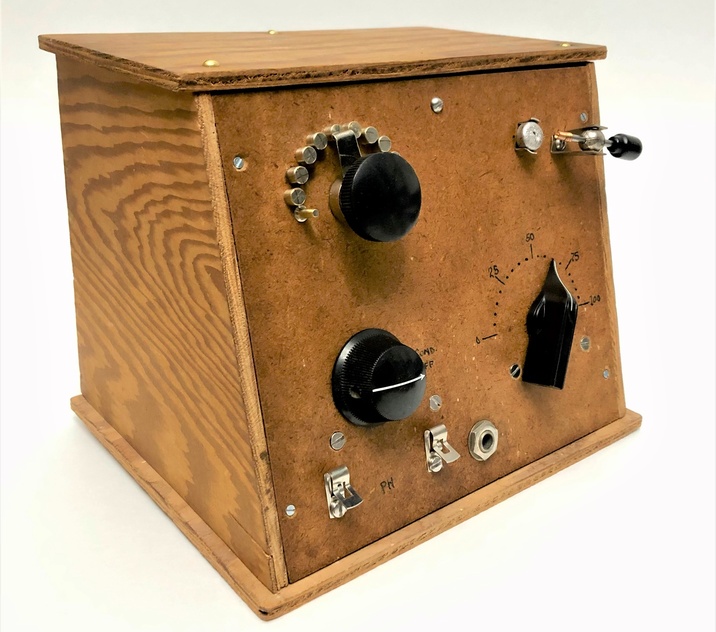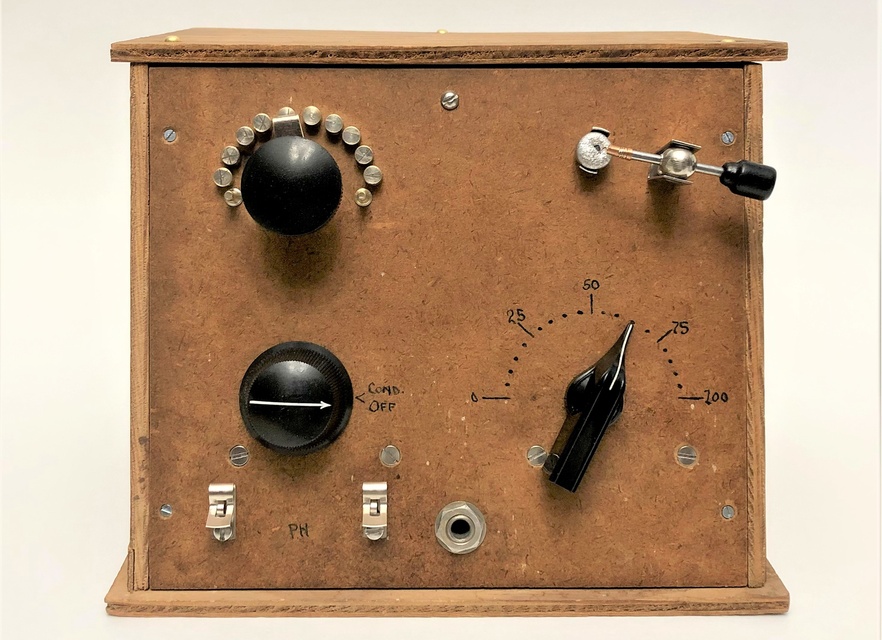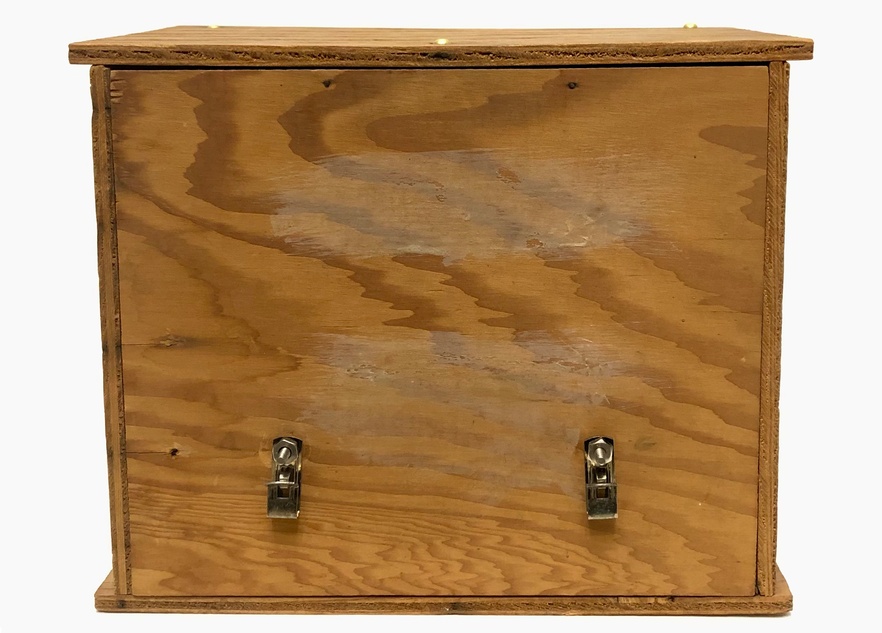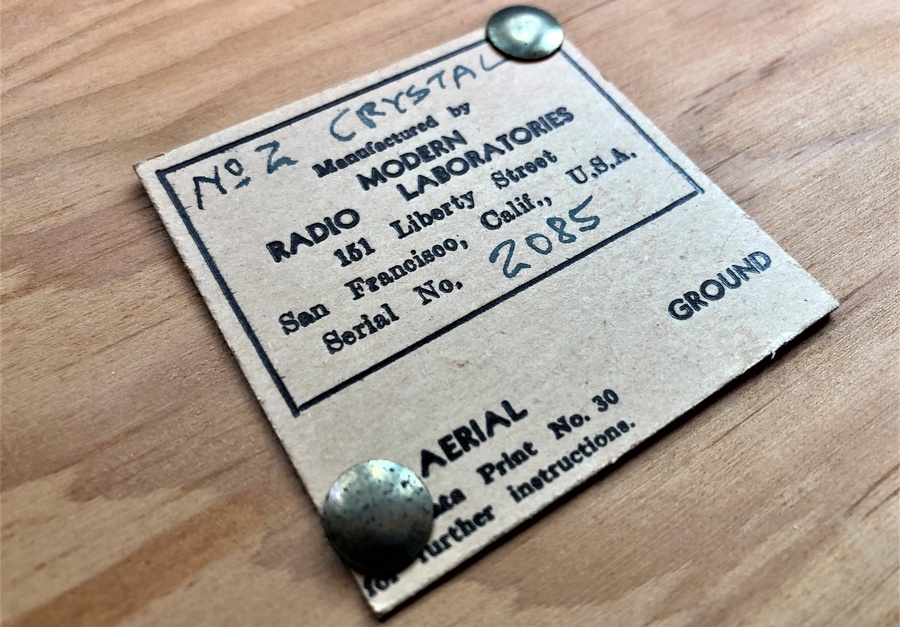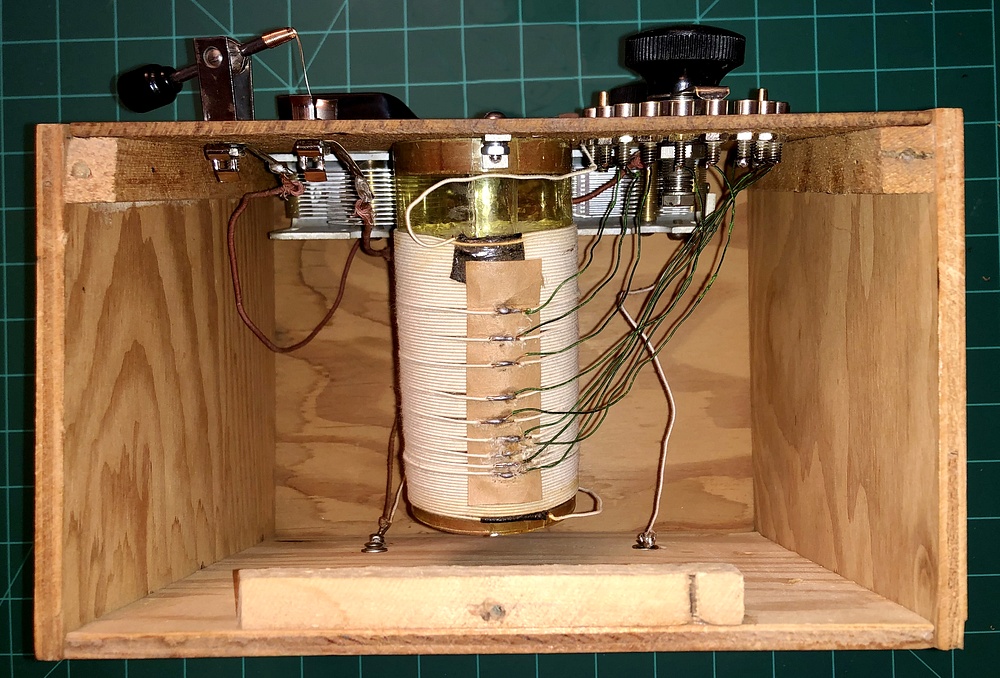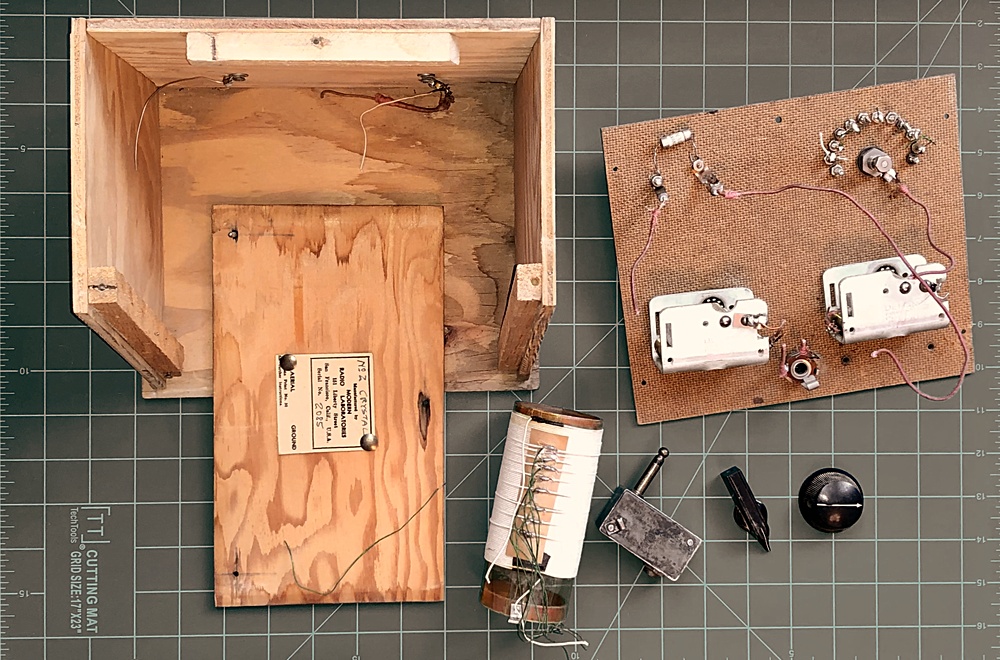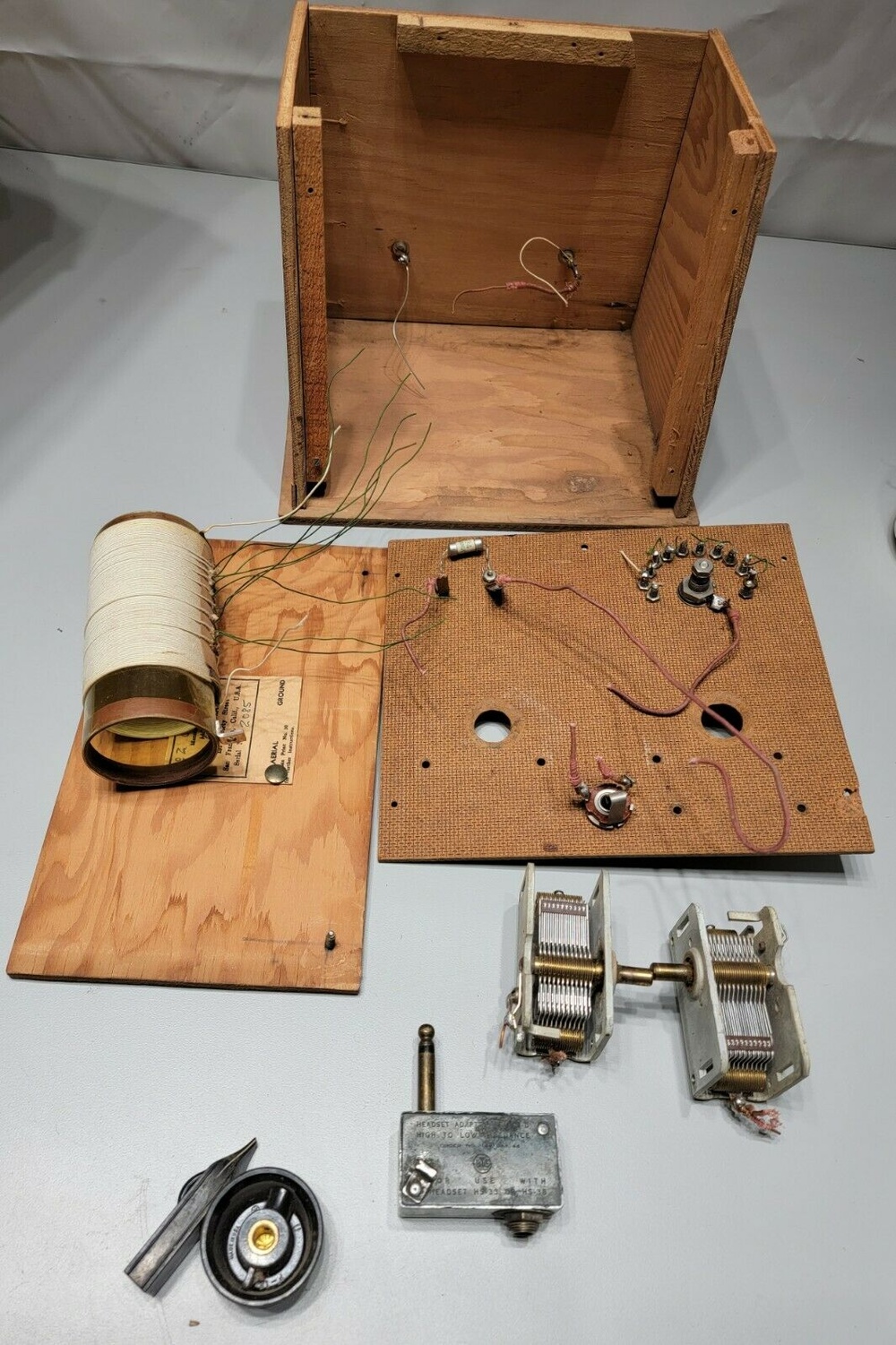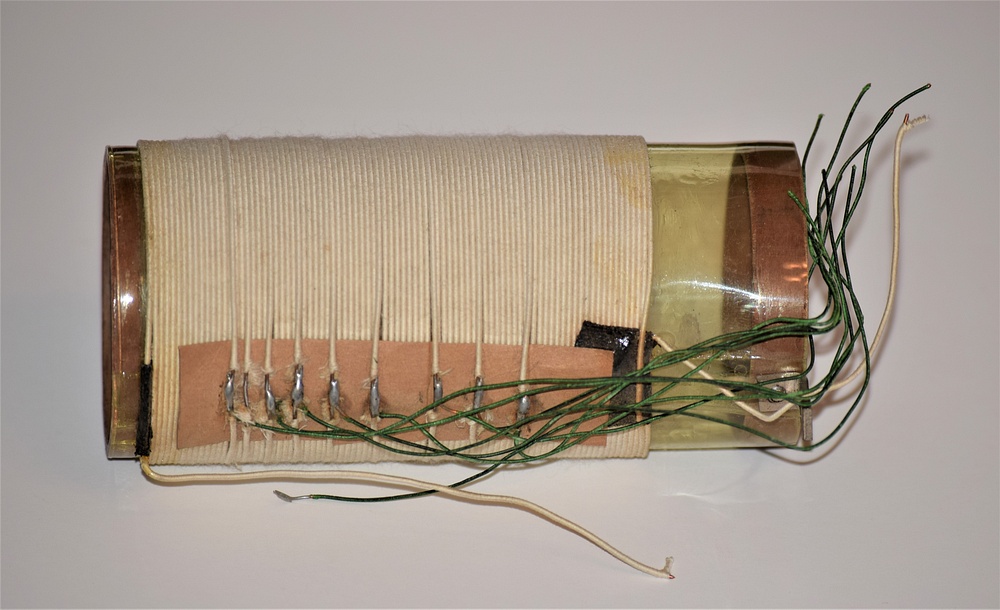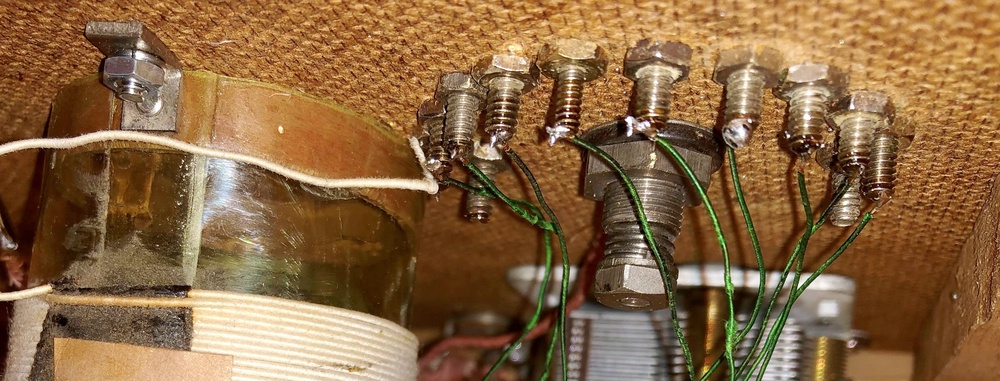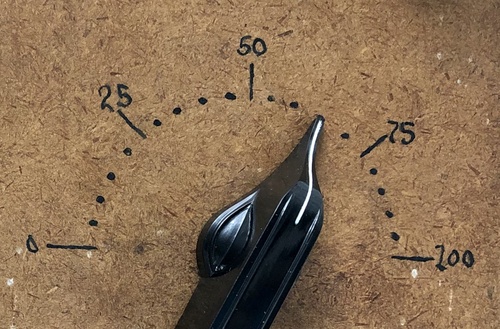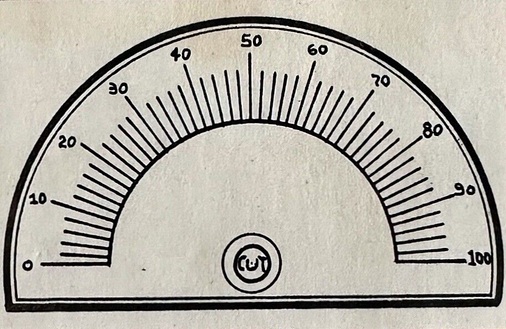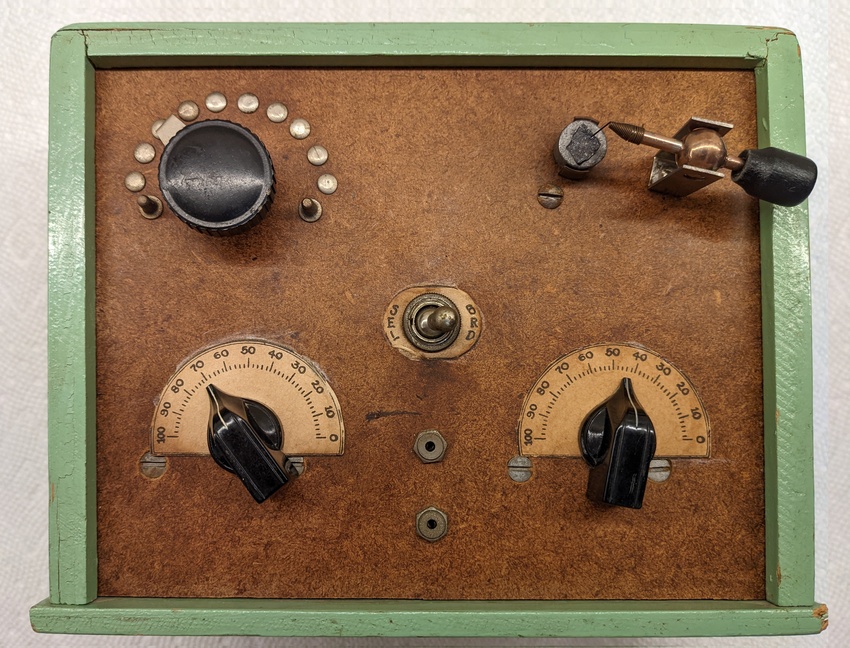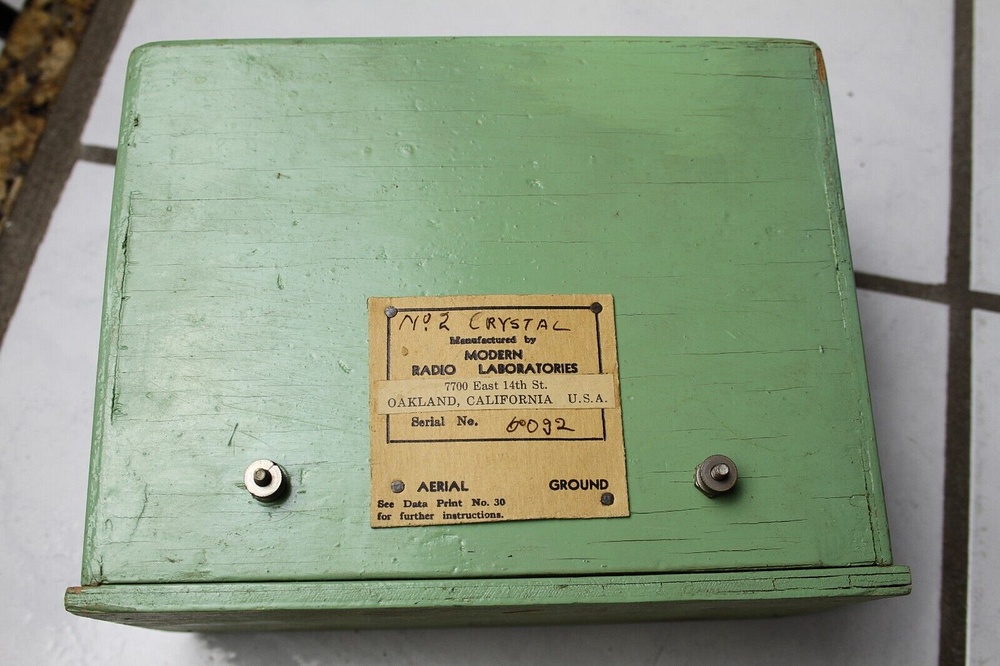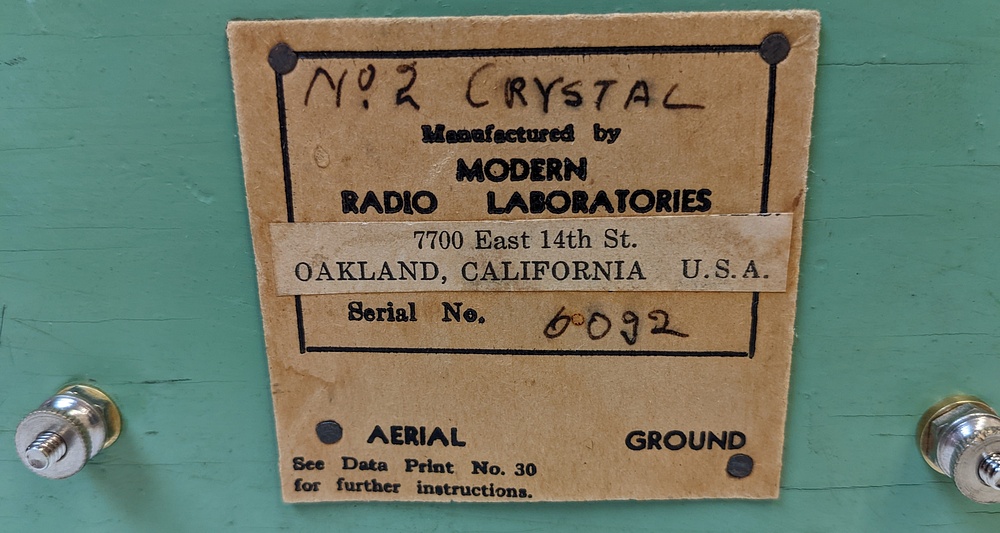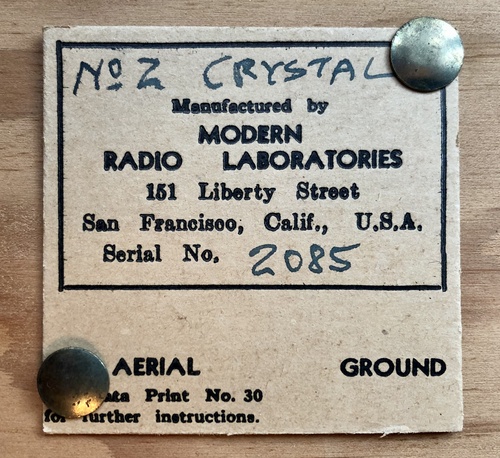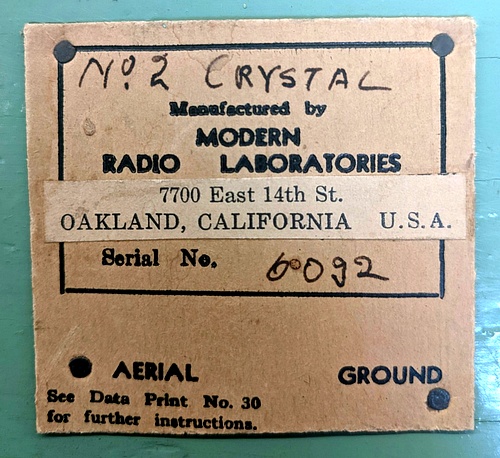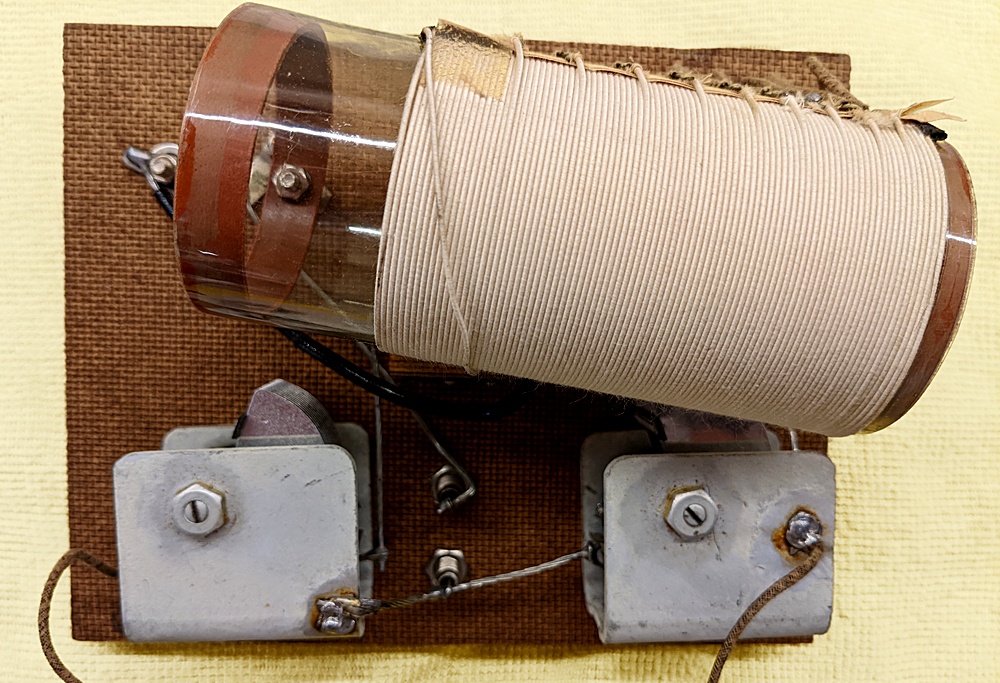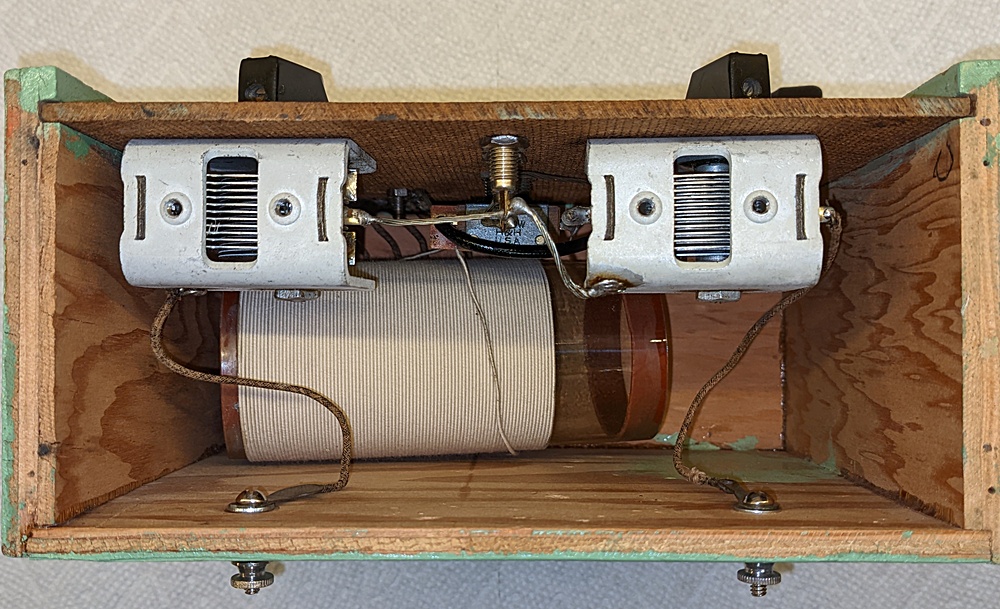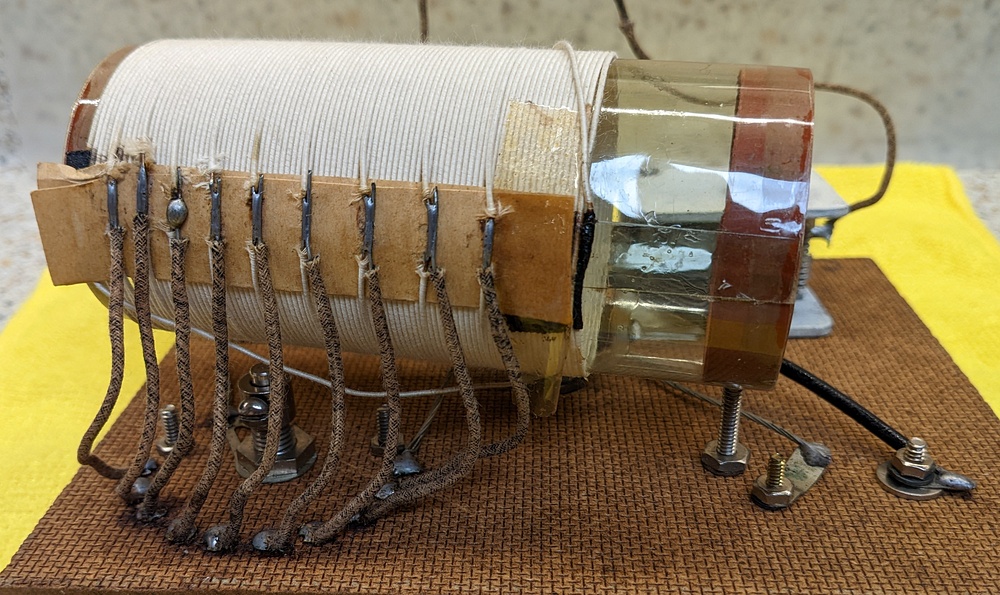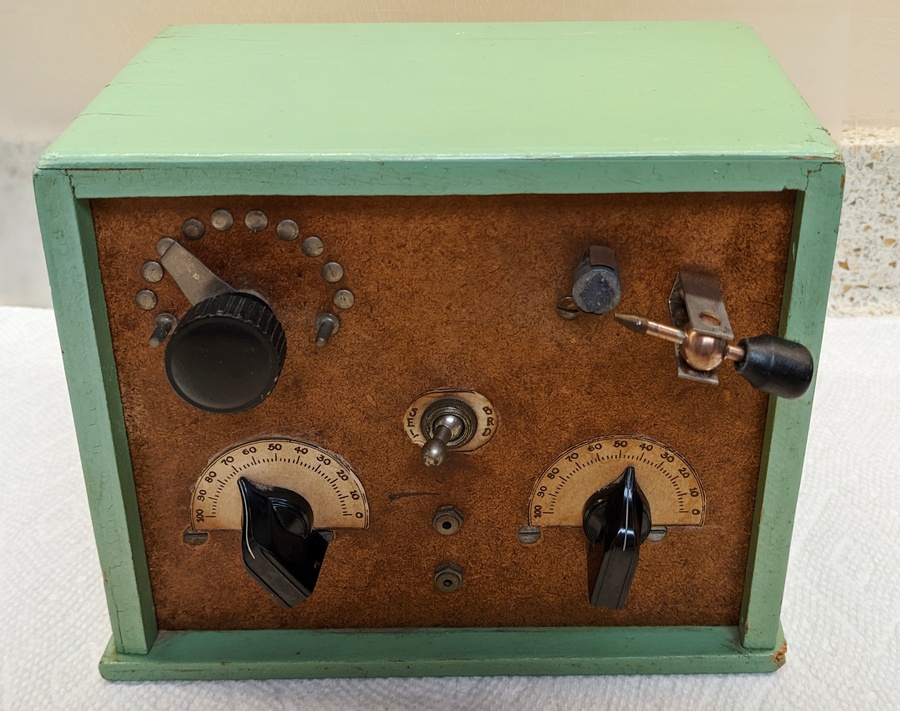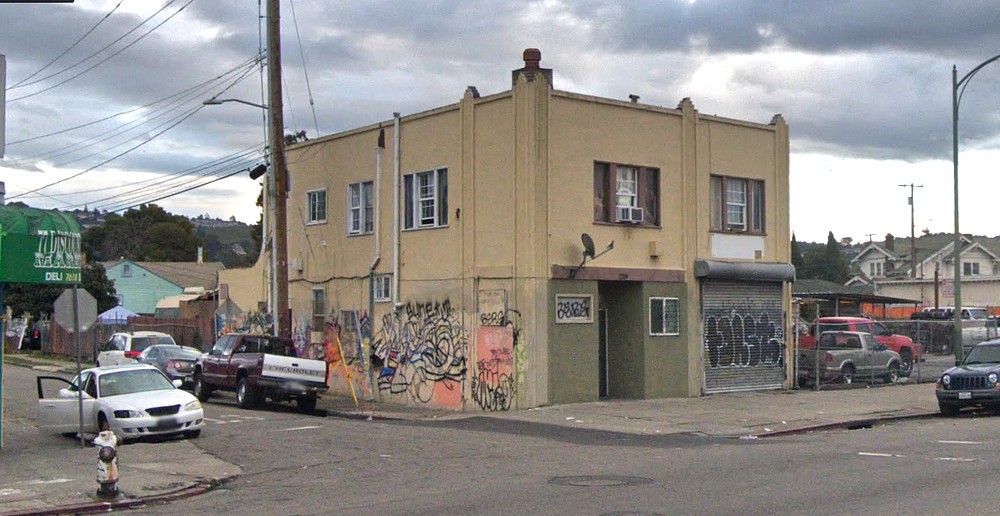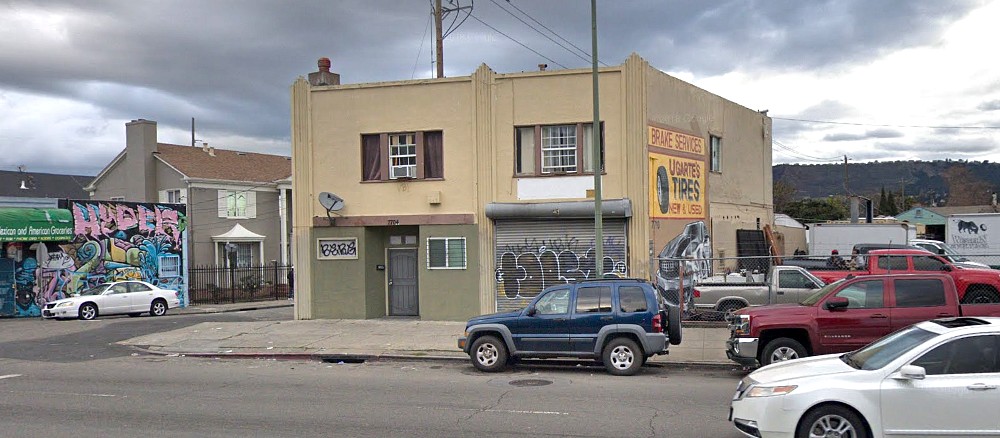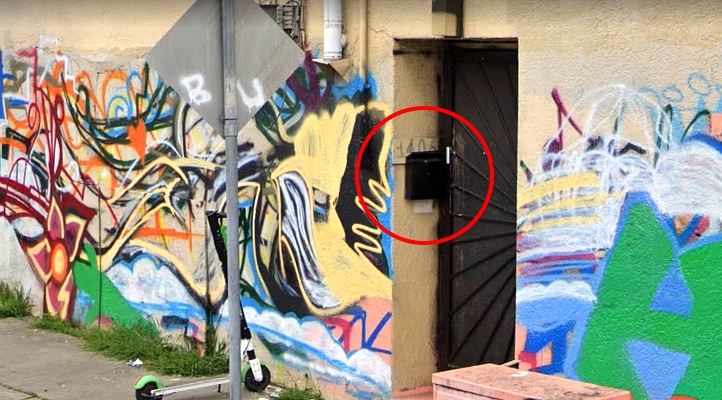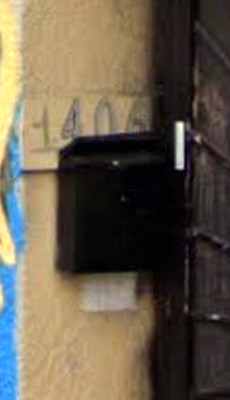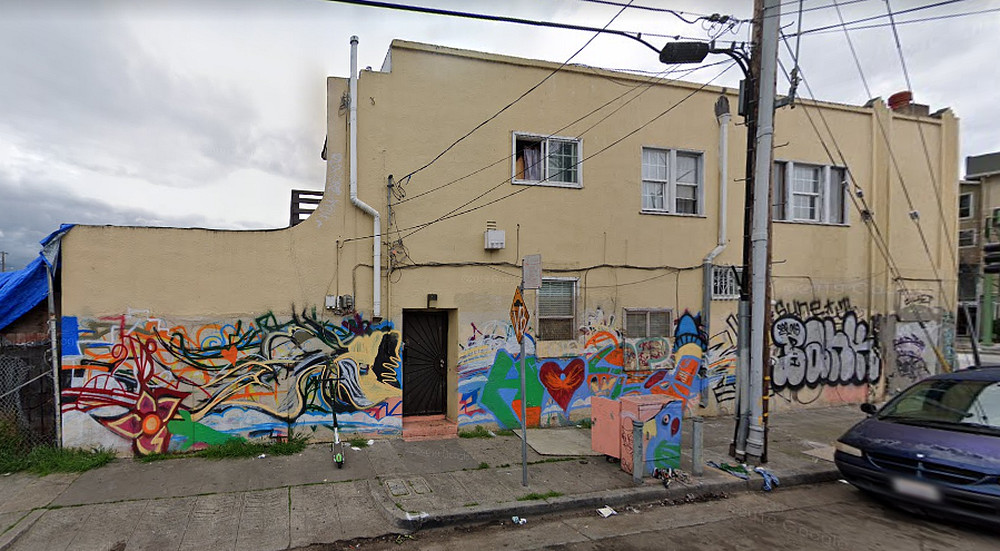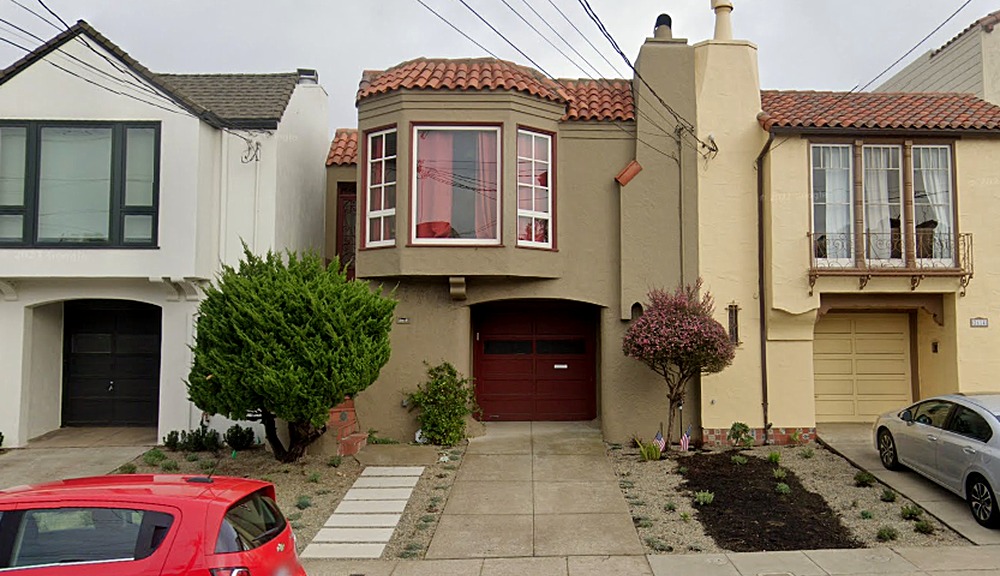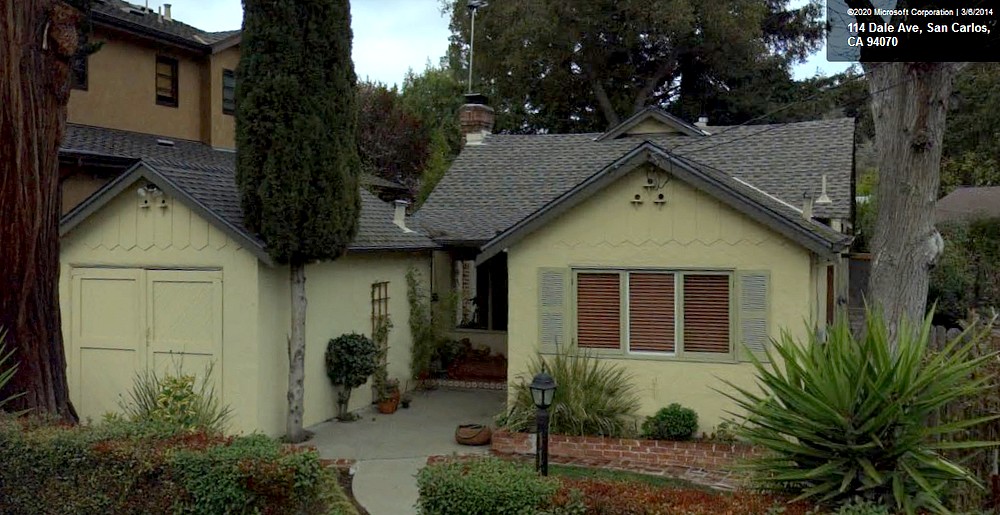|
|
|
|
|
|
OLDEST KNOWN MRL NO. 2 CRYSTAL SET |
|
|
|
|
|
|
A Modern Radio Laboratories No. 2 crystal
set, made between 1934 and 1938.
|
|
|
|
|
|
This early version
was built before the circuit and panel
layout were finalized by Elmer, but it does closely resemble
the layout of the later versions. (The Fahnestock clips are
not original.) Missing is the "Broad/Selective"
switch in the center.
Describing this set in Handbook 2, MRL No. 2 Long
Distance Crystal Set, Elmer wrote, "It was very similar
to our present No. 2. Then we added the SEL-BRD switch for
more selectivity." |
|
|
|
|
|
|
Rear view. |
|
|
|
|
|
This perfectly preserved label with the serial number
and address was found inside the lid. The address gives the
approximate date the set was made (1934 - 1938). Is it possible that Elmer
made 2085 of these sets, or did the serial number follow
another format? |
|
|
|
|
|
| A look inside. Notice the coil is
mounted perpendicular to the front panel. |
| |
|
|
|
|
|
|
This set survives to this day only because of a
serendipitous event. MRL fan Vic Rodiguez
was on ebay in 2022 looking for some antique
variable capacitors, when he found a set of
two from 1930. He asked the seller what the
value was (in picofarads, not dollars) and
the seller wrote that he didn't know, but
was parting out an MRL crystal set he had
gotten at an estate sale. Vic then offered
to buy all the parts. The history of the
radio was lost when the owner of the
"estate" passed away, and the radio itself
was almost lost to history. |
|
|
|
|
|
|
|
|
This photo was supplied by the ebay seller. |
|
|
|
|
|
The set had already been partially disassembled and
the coil had been cut out.
|
|
|
|
|
|
The wires were reconnected with some radio surgery.
|
|
|
|
|
Did Elmer write these numbers on the
panel?
The numbers and dots were written with a fountain
pen.
Compare the handwriting with the MRL dial
scale on the right. |
|
|
|
|
|
A No. 2 CRYSTAL SET FROM 1938 |
|
|
|
|
|
A Modern Radio Laboratories No. 2
crystal set built in 1938 or 1939.
This one is owned by Quentin Schiltz of Champlin,
MN. |
|
|
|
|
|
|
|
Rear view. |
|
|
|
|
|
|
The address on the label dates this
to 1938 or 1939. Once again the serial number is
a mystery. Did Elmer make 4007 more sets since the one
shown at the top of the page, almost three a day? Did he make 92 sets in 1936?
Does it mean
something else entirely? Notice Elmer's
distinctively shaped number 9. Also notice that
"Detail Print No. 30" was once called "Data Print
No. 30." |
|
|
|
|
|
The two labels side by side. More fountain
pen ink. (the ballpoint pen wasn't invented till 1943).
These labels are one of the few examples found where Elmer used the
full name of the company, without shortening the word
"Laboratories." |
|
|
|
The coil is pristine! |
|
|
|
|
|
From the bottom. |
|
|
|
|
|
Built by Elmer Osterhoudt! |
|
|
|
|
| MRL used to sell cabinets like this one.
Except for the factory made rotary switch,
all later model No. 2 sets follow this design. The final
design change occurred in 1952 when Elmer invented his own
switches. Click on the image for a full size version.
|
|
|
|
|
|
END OF THE MODERN RADIO LABS RADIO SHOP |
|
|
|
|
|
|
| In 1938
and 1939 the address for Modern Radio Labs was 7700
East 14th Street in Oakland, CA. From 1940 to 1943
the address was 1406 77th Avenue, both of which are
in this building at the corner of 14th and 77th. The
entrance to 1406 77th Avenue is behind the pickup
truck and utility pole. The storefront faces 14th
Street. The actual address of the building (in the
year 2022) is 7700 International Blvd. |
|
|
|
|
|
| 1939 Oakland Yellow Pages ad. |
| |
|
|
| Why did
the MRL address change in 1940? The 1940 US Census
shows they did indeed have a radio store here.
Perhaps the Osterhoudt's just switched the MRL
mailing address for convenience. Maybe the days of
the radio store were coming to an end. A lack of
inventory during the rationing of WWII would have
put them nearly out of business, anyway. In 1942 the
production of consumer radios, as well as nearly
every other appliance, was halted by the US
government due to the war. |
|
|
|
|
|
|
1940 phone book entry. 7700 E 14th was the
storefront. |
|
|
|
|
|
1940 and '41 entry, but the phone number is
not the same as the MRL number in 1939. |
|
|
|
|
1941 phone book entry. The store is no longer
listed, but Elmer is a salesman.
There is no listing in the 1940 or 1941 Yellow Pages for the
store name or either address. |
|
|
|
Elmer
wrote that he worked at the Navy base as a Radio
Mechanic during two years of the war (Radio
Builder and Hobbyist No. 25). His draft card
shows that in 1942 he was employed by the US Navy at
the US Naval Air Base in Alameda, CA. If this was
the case, the shop may have been closed for the
duration, and never reopened.
Modern Radio Labs did carry on during the war, as
evidenced by advertisements in Radio World
and Popular Mechanics in 1943. However, an ad
in the March 1944 edition of
Radio Craft has the MRL address in Hayward,
CA, so the Osterhoudt's had moved out of this
building by then. Hayward is about 10 miles south of
Alameda. |
|
| |
|
|
1406 77th Avenue
entrance.
|
The
building is a "2-Story Mixed Use
Commercial/Residential situated on a ±3556 Square
Foot Lot." The street level section is zoned
"Commercial - Retail/Office." Upstairs is zoned
"Urban Residential" and has 4 bedrooms and 2 bathrooms. It was built in 1923.
Every other year it gets a new paint job, which then
gets ruined.
|
|
|
|
According to the 1940 census, Elmer and Mabel
Osterhoudt owned this property, lived here and
operated a radio store.
This is how it looked 80 years later, in 2020. |
|
|
|
|
|
|
| In March of 1944 the Osterhoudt's moved to
363 Hampton Road in Hayward,
California. In May of 1945 they moved to the house
shown above, at 2610 18th Avenue
in San Francisco. The
house was built in 1931. |
|
|
|
|
|
Six months later, in November of 1945, the Osterhoudt's moved to this
house in San Carlos, CA. and lived here until 1950.
The house is much larger than it appears from the street. We
may assume MRL was in the garage on the left. |
| |
|
|
| Advertisement from Popular
Mechanics, September, 1946. |
|
| |
|
|
| |


